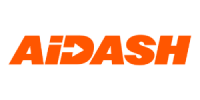How to pick the right technology to hit your biodiversity goals
With new regulations and requirements coming out of the UK, EU, and US, it’s clear that biodiversity and land sustainability is being taken as seriously as climate change.
As these new laws and expectations get put into place, you’ll have targets and commitments to hit. How are you planning to track, measure, and report on your land assets biodiversity, much less start improving it?
Traditional methods to measure biodiversity
You really have two options for this: do it manually, or use technology.
We’ll get to the technology options in a moment, but first let’s talk about how to do this manually.
You would need to create a plot map(s) using publicly available data, typically from government sources. Then you’ll need to hire a team of ecologists to go out and manually assess each habitat.
Usually, it would be 1-2 ecologists on site to do a survey. Then, they would create a report. That would be sent to another team of ecologists to be verified, and then they’d report the findings to you.
For every 20-100 hectare site it would take somewhere between 4-8 weeks for this process. Typically, that includes about a week for surveying the site (with more time required depending on the size of the site), and the rest of the time reporting and reviewing.
For one site, this is a perfectly acceptable approach. The problem really lies with the ability to scale.
If you had multiple sites that needed assessments, you’d need to hire multiple teams all working in parallel, or rely on the same team to go one by one. Either way, this gets extremely expensive. At a certain point, it just isn’t realistic if you have hundreds or thousands of sites across a country.
The costs, both in time and money, present a burden to companies in order to just stay compliant. There must be an easier way so that it makes business sense to be a good corporate citizen, on top of making ethical sense.
This is where remote sensing technology has gotten to place where it’s viable to measure sustainability in a holistic way, taking the pressure off companies.
Technology options to help you hit your biodiversity goals
There are three main remote sensing techniques, each with their own pros and cons.
Drones
Drones present a simple enough concept: Attach a camera to a drone and have an operator fly over a property. Once the images are back ,you can have an ecologist analyze the images, or a data science team to piece it together if you’re using LiDAR.
It’s certainly quicker than manual surveys (at least for scanning), but this method can get quite costly when you’re doing multiple sites. And at the end of the day, you have to make a choice between sending out a drone operator or an ecologist. If you can still do only one site at a time, you might as well send the ecologist.
Aerial
Another popular method is aerial imaging, both from planes and helicopters.
Aerial imaging is generally high quality, and on a greater scale than drones. But if you’re dealing with sites spread throughout a state or country, that still requires multiple flights. That’s costly, especially if you want to rescan those sites every year to measure your progress. The emissions from those constant flights is another factor to consider.
Satellites
Satellites offer sustainability at scale. Whether it’s one site or 10,000, you can scan and analyze them all at the same time. The ecological survey and analysis process can happen in days instead of months. Additionally, rescanning your sites on an annual basis is cost effective, so you’ll be able to actually track and measure your progress.
The main drawback from using satellites is resolution. Satellites have around 30 cm resolution, while aerial has 10 cm. Both give plenty of pixels to meet the minimum mapping unit required by regulators, but it’s still a bit of a tradeoff between cost effectiveness and resolution.
The good news is that satellites are improving, with an expected 10 cm resolution, so it’s a future-proof technology in that regard.
These work together
Drones, aerial imaging from planes and helicopters, and satellites don’t have to be competing technologies either. They each have their place.
For instance, we’ve seen many clients use ecologists or aerial imaging to do their initial assessments because they want the most accurate initial imaging as possible. Then they work with us and satellite imaging to provide continuous monitoring to track, measure, and report on their biodiversity progress, all within one platform.
If the satellite scans flag an area of concern, they may send an ecologist out to do a targeted assessment, which is a much more efficient process for biodiversity management.
Going beyond the data
Regardless which remote sensing method you feel is right for you, you need to consider what comes next.
Getting the measurements or assessments is a great first step, but regulators want action plans and progress.
This is where an AI solution really shines. By combining our AI with satellite imagery or other data sets, AiDASH can help you baseline, plan, track, and report on progress to ensure that you hit your biodiversity targets.
Want to see what this could look like for you? Get in touch with an expert today to start tracking sustainability at scale.
